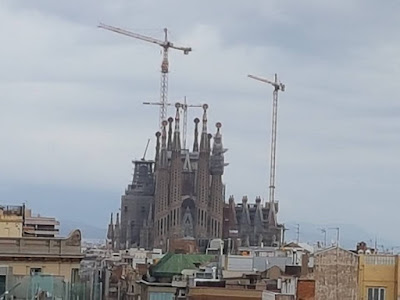My Reliable Mercedes E 230 2.4 litre 7 Gear Transmission
I've had my Mercedes E class E 230 for 6 years now, it is coming to the 10 year end of the Certificate of Entitlement (COE for short) duration by Dec 2017, whereby the owner (me) would have to decide whether to scrap (send the car for scrapping) and get back 50% of my Preferential Additional Registration Fee (PARF) and use the money to buy a brand new car.
Singapore's car taxes is the highest worldwide and we locals pay a huge sum for the 4 wheeler ; as we have a very good (most times anyway) transport system, many people opt for public transport which is seamless (you can use 1 Easylink card to take the feeder bus, the underground MRT and landed bus). Our Government has plans to make Singapore 'car light' by 2025 and plans as well as infrstructure projects are ongoing to add more cycle paths, jogging and walking paths, park connectors, underground walkways as well as improve the current rail and bus network substantially.
However many people still require a car. Families with small children, business owners, employees which require regular out of office commute, car enthusiasts, elderly people with disadvantaged family members and the wealthy would still stick to their cars.
So in 5 months time, I will have to decide if I will forgo my PARF 50% (roughly S$25,000) and then opt to bid for either a 5 years (S$ 24,500) or 10 years (S$ 49,000). The total outlay for my car would then be S$ 24,500 for 5 years plus opportunity cost (loss of S$ 25,000 PARF), increased road tax (10% per year) and increased comprehensive insurance (30% more). All this before factoring the car servicing costs, petrol and ERP charges.
I am favouring a 5 years extension of COE so the sums would be
Option 1 : Retain my Merc and extend the COE for another 5 years
a) S$24,500 outlay (for COE for 5 years)
b) S$ 1,800 road tax per year (now is $1,600 per year)
c) S$ 1,000 insurance (now is $750) for an 'old' car.
Total Cash Outlay : S$27,300
Outlay per year is S$ 6,800 (car servicing, petrol and ERP are extra) but I lose out on the S$ 25,000 rebate I would get in return if I scrap the car.
Factor that into the equation and I lose $11,800 per year in depreciation for my Merc for the next 5 years.
Option 2 : Buy a new Car like the Toyota Harrier 2.0 SUV
a) S$ 130,000 cash outlay (brand new Toyota Harrier with COE for 10 years included)
b) S$ 1,500 road tax (no change year on year)
c) S$ 800 insurace (my no claim discount is 50%)
Total Cash Outlay (less S$25,000 rebate) : S$ 107,300
If I consider getting a new car like the Toyota Harrier 2.0 which is retailing at $130,000.
(including COE) I will be able to get my rebate of S$ 25,000 and thus, the outlay for the new car is S$ 105,000. Add road tax and insurance (roughly 15% less than the above b and c) and I would need to fork out S$ 107,300 for 10 years.
Since the car is brand new, there will be practically 0 service costs for the next 2 years (under warranty).
Hence, the depreciation is a very competitive S$ 10,738 per year for a newer (but not a Merc) marque which I like very much. I have driven the last 2 versions of the Harrier 2.4 for 6 years prior to this and love the space and above ground feel of the SUV.
So high initial cash outlay for the brand new Harrier, but year on year lower depreciation versus the much lower cash outlay but higher servicing costs (surely) and barely coverable insurance for the 10 year old Mercedes.
Most insurance companies only opt for third party insurance for cars with more than 10 years on the road.
Decision time for me soon.











